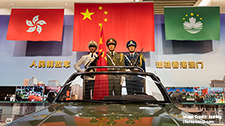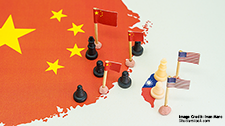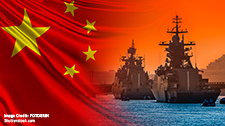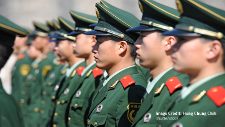China's Military Transformation
In the new century, China’s military reform has entered a new stage. Over the course of the last decade, the PLA has been proactively and steadily pushing forward its military transformation by striving to build a modern military force. In the future, the PLA is likely to focus on improving its capabilities to protect Chinese national interests at home and abroad. However, the development of the Chinese military in recent years has drawn skepticism and even fear over the purpose, especially not only in East Asia, but also in Europe and North America. The impact of what constitutes of China’s “Military Transformation” on the regional and global power balance is a point of contention.
The main purpose of this project is to analyze China’s military reform and provide insight into understanding the ultimate goal of Chinese military development. As ISDP has a long relationship with the PLA and the PLA Academy of Military Science in Beijing, the project is also expected to play a proactive and coordinating role in the establishment of networks between world leading experts and Chinese military officials to exchange their views on current global security challenges and the PLA’s role. As a part of this project, ISDP and the Chinese PLA Academy of Military Science have jointly organized an annual ISDP-AMS conference since 2008.
Related News
Related Publications
-
The Ecological Cost of Security: Military Development and Environmental Change in Tibet
Summary The expansion of the Tibet Military Region represents a critical intersection of geopolitical strategy and environmental preservation, creating complex challenges for both regional security and global climate patterns. This […]
-
The Fourth Phase in the Taiwan Strait Military Standoff: Emerging Dynamics and the Prospect of War
KEY TAKEAWAYS The cross-strait military standoff has entered its fourth phase—a “renewed cold war”—following China’s military drills in 2022, signaling heightened risks for armed confrontation. Military exercises, force deployments, and […]
-
Safeguarding the Global Chip Supply: Lessons from PRC’s Technology Acquisition Tactics in Taiwan
Taiwan’s technological advantage, especially in the semiconductor sector, serves as a key factor for deterring a Chinese invasion. However, there are documented cases of the PRC using multiple strategies to […]
-
Climate and Environment in CCP’s Control Strategy in Tibet
The Tibetan Plateau is warming rapidly, leading to significant ecological changes and threatening water security for millions. This issue brief examines the impact of the Chinese Communist Party’s (CCP) governance […]
-
Military-civil Fusion is a key Chinese Strategy with long-term Implications: An Interview with Jingdong Yuan and Yifei Zhu
The People’s Liberation Army (PLA) of China is undergoing a significant strategic transformation, prioritizing modernization through the integration of advanced technologies into its military capabilities. In recent years, the PLA […]




